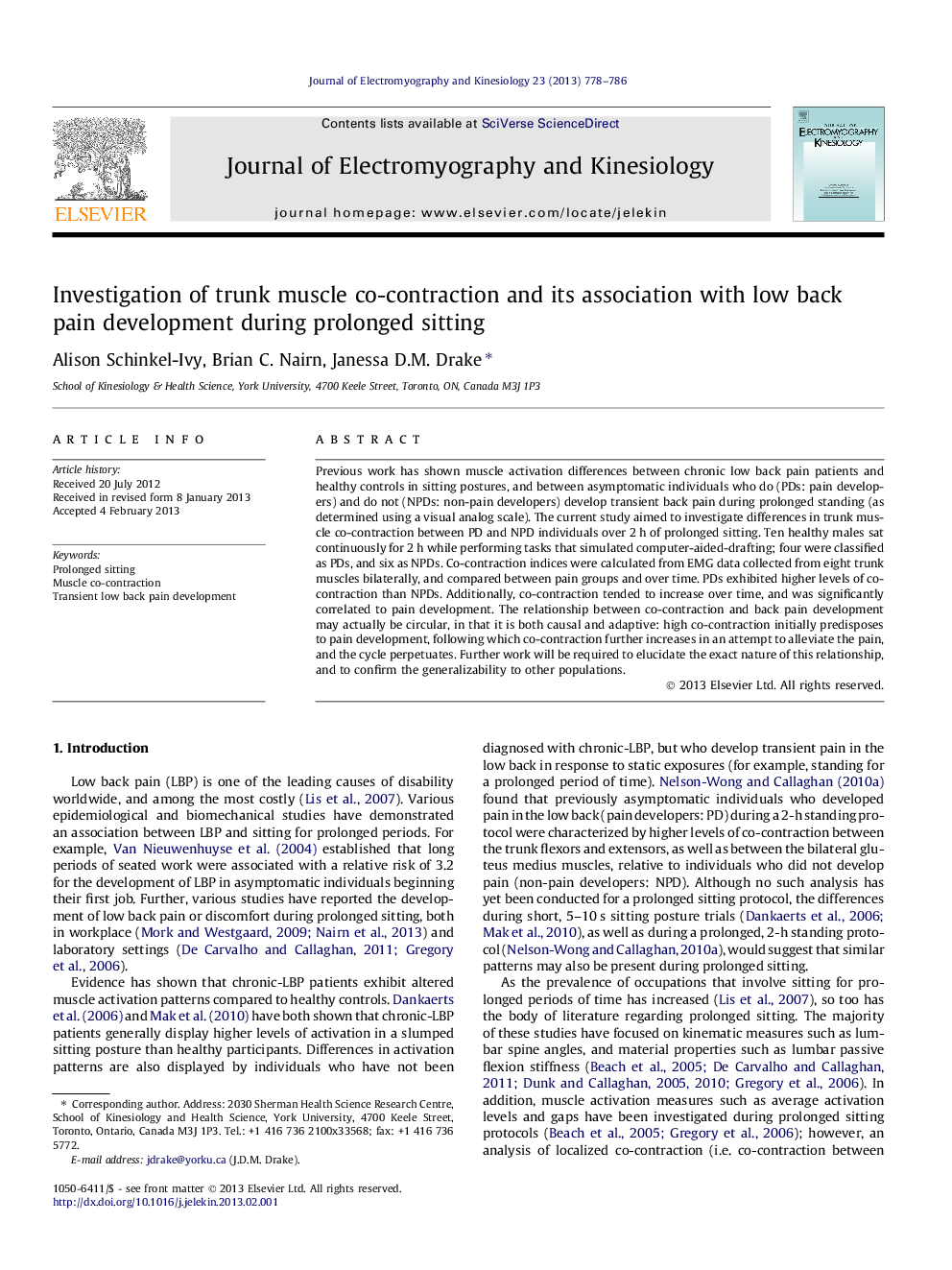| Article ID | Journal | Published Year | Pages | File Type |
|---|---|---|---|---|
| 4064516 | Journal of Electromyography and Kinesiology | 2013 | 9 Pages |
Previous work has shown muscle activation differences between chronic low back pain patients and healthy controls in sitting postures, and between asymptomatic individuals who do (PDs: pain developers) and do not (NPDs: non-pain developers) develop transient back pain during prolonged standing (as determined using a visual analog scale). The current study aimed to investigate differences in trunk muscle co-contraction between PD and NPD individuals over 2 h of prolonged sitting. Ten healthy males sat continuously for 2 h while performing tasks that simulated computer-aided-drafting; four were classified as PDs, and six as NPDs. Co-contraction indices were calculated from EMG data collected from eight trunk muscles bilaterally, and compared between pain groups and over time. PDs exhibited higher levels of co-contraction than NPDs. Additionally, co-contraction tended to increase over time, and was significantly correlated to pain development. The relationship between co-contraction and back pain development may actually be circular, in that it is both causal and adaptive: high co-contraction initially predisposes to pain development, following which co-contraction further increases in an attempt to alleviate the pain, and the cycle perpetuates. Further work will be required to elucidate the exact nature of this relationship, and to confirm the generalizability to other populations.
